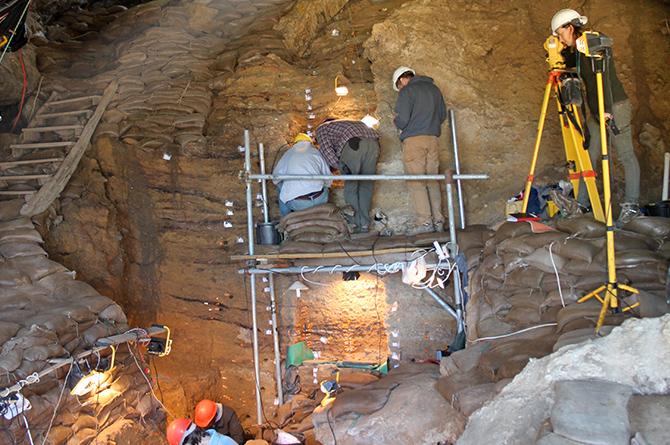When Mount Toba in Indonesia erupted some 74,000 years ago, resulting in a decade-long volcanic winter, humans didn't just survive—they thrived.
That's what Naomi Cleghorn, associate professor of sociology and anthropology, and a team of researchers discovered when they looked at two sites along the southern coast of South Africa: Pinnacle Point, where people lived, and an open-air site nine kilometers away, where they collected stone and processed it for future tool manufacturing.
The team's research, which was published in a Nature paper, centered on glass shards that traveled nearly 9,000 kilometers from Toba to Pinnacle Point.
"We have demonstrated that in [these sites] that may have housed the origin population for all modern humans, our ancestors thrived through this volcanic event," Dr. Cleghorn says. "This may have been the combined result of the uniquely rich resource base of the region and a highly resilient adaptation—a hunting and gathering economy wielded by a modern human with an advanced cognition and high level of cooperation."
Now that the two sites have been identified, the research is extending to other sites, including Cleghorn's current dig, Knysna. Through her work at Knysna and Pinnacle Point, Cleghorn aims to develop a high-resolution chronology of human evolution and social adaptation during that time.
"Naomi Cleghorn's work is foundational to paleosciences," says Elisabeth Cawthon, dean of the College of Liberal Arts. "It is also cross-disciplinary work, linking UTA's strategic themes of global environmental impact and sustainable urban communities."
Health and the Human Condition
Global Environmental Impact
Sustainable Urban Communities
Data-Driven Discovery



